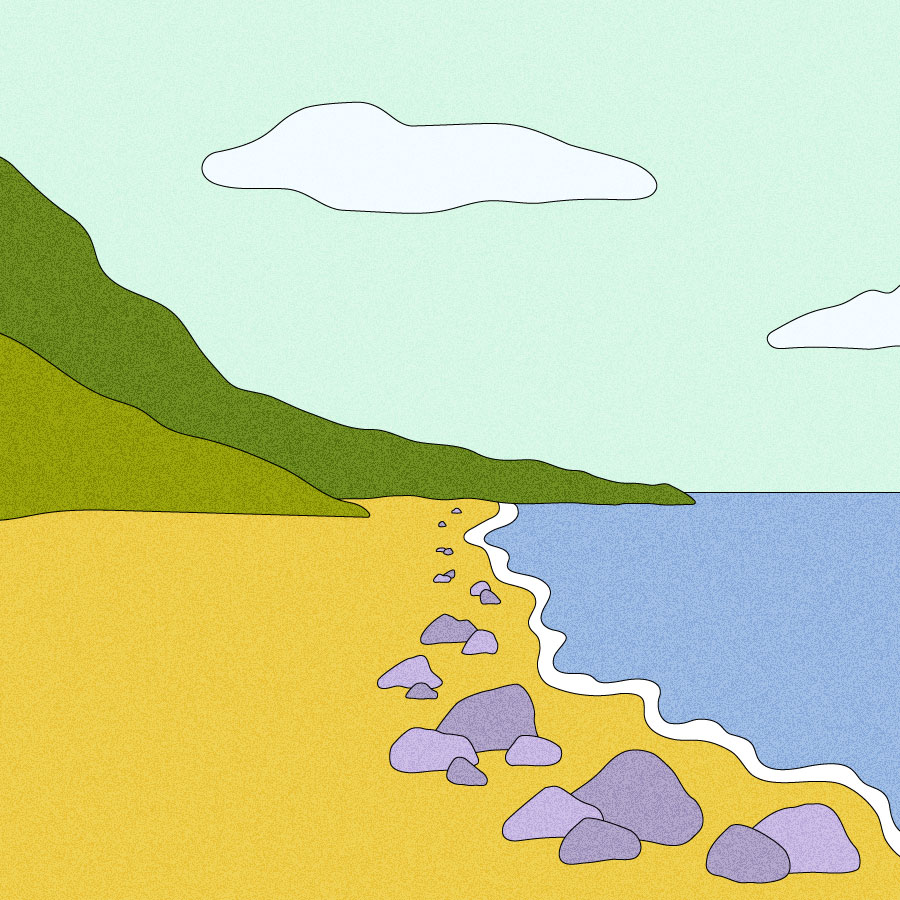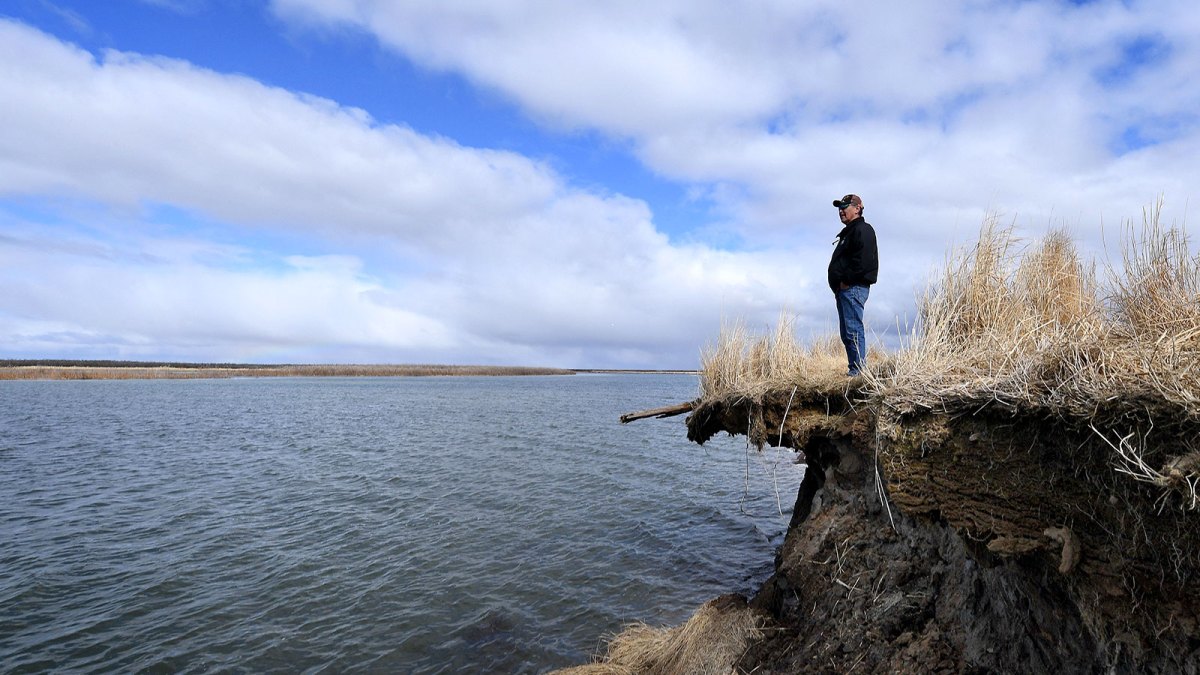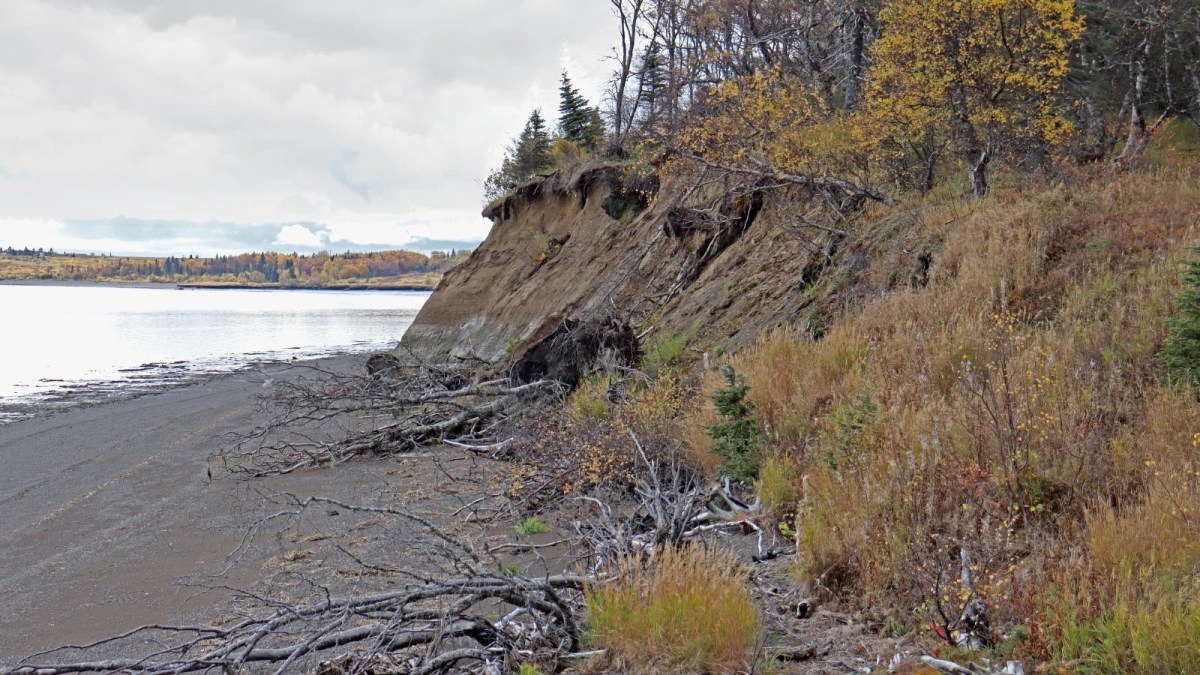
The vision
The mayor of your small town loves making a fuss over little victories. In this case, more than a fuss — a full-blown local holiday.
In spite of yourself, you feel excitement bubbling in your gut as you head to the beach site where you’ve been working for the past month. You’re placing the last stones today that will help shield the beach from erosion — and this marks the last inch of the town’s coastline to be protected.
You see the crowd, bigger than you’d expected, already gathered as you pull up to the site. Let the Coast Day festivities begin.
— a drabble by Claire Elise Thompson
The spotlight
With climate change fueling rising seas and melting permafrost, beaches in the north are eroding fast. On the western coast of Canada and Alaska, coastal communities lose more than 4 feet (1.4 meters) of beach per year. As communities consider whether or not to relocate, many are weighing the loss of ancestral lands and the history that they hold.
But there may still be ways to hold the ground in place. Earlier this month, Grist published a feature by freelance journalist Saima Sidik, exploring some of the scientific solutions that researchers are exploring to keep Alaska’s coasts from vanishing. A biologist by training, Sidik made the switch to science journalism three years ago, and has covered a range of topics in health and environmental science. Last year, she got a grant to visit Alaska and report on local issues. Her brother lives part of the year in Dillingham, Alaska, working as a commercial fisherman, so she took a side trip to see him.
While she was there, he told her: “All anyone talks about here is the erosion. That’s what you should write about while you’re here.” She could understand why. “It definitely strikes you when you see it,” Sidik says. Knowing that the problem of erosion had been well documented, she began looking for a new way to tell the story — and she stumbled on a research paper from 2020 examining erosion prevention and control options specifically for high latitudes. She wanted to tell that story. Dillingham became the backdrop for the feature she wrote for Grist, exploring emerging approaches that researchers hope hold promise for preserving Alaska’s coastlines.

In April 2019, tribal elder Warren Jones stands on the edge of erosion caused by melting permafrost tundra and the disappearance of sea ice. Climate change-fueled erosion threatens houses from the Yupik Eskimo village of Quinhagak on the Yukon Delta in Alaska. Mark Ralston/AFP via Getty Images
We’re highlighting three of the approaches here. Check out Sidik’s full feature here.
![]()
Thermosiphons
One strategy to keep erosion at bay involves drawing heat out of the ground in order to keep permafrost frozen. Thermosiphons are devices that can passively move heat from the ground to the air. Essentially large tubes with one end buried, they contain a liquid that evaporates when the ground gets warm enough. The gas rises to the top, bringing the heat energy with it — and, if the air is cool, it condenses back into liquid form and sinks, repeating the cycle.
If the air is too warm, thermosiphons can still work with the help of an air-conditioning system. This could be powered by solar panels, which would bring the additional benefit of shading the ground. Thomas Ravens, a civil engineer at the University of Alaska at Anchorage, told Sidik that there’s something compelling about the idea of using the sun’s energy to help cool the earth rather than thawing it: “It’s almost, like, poetic.”
The use of thermosiphons has already been successful at some inland sites, like near the Fairbanks airport. But it is one of the more costly options that researchers are pursuing, so it’s unlikely to be the sole solution.
Urease bacteria
Another option is to try and bind the ground without the help of permafrost, instead relying on bacteria to harden the soil. Urease bacteria, which naturally occur in soil, break down a chemical called urea, secreting charged molecules as they go that interact with calcium to form a kind of natural glue. These urease bacteria are already common in many places. With the addition of urea, they could work to bind the soil together, essentially mimicking the process of sandstone formation and making it much harder for the ocean to erode sand away.
And yes, this is the same urea found in urine. Researchers imagine a future system that could use wastewater to source the urea that drives this process.
One downside is that when they break down urea, the bacteria also produce ammonia, a toxic compound that could harm the ecosystem. Researchers are still exploring ways to flush this byproduct out of soil that’s been treated for erosion control.
Dynamically stable beaches
A third idea is to let beaches shift without losing ground. A “dynamically stable beach,” as described by Dutch researcher Jentsje van der Meer, might reconfigure after being pelted by waves, but it won’t wash away. This strategy involves supplementing sandy beaches with rocks between 2 and 8 inches wide. Larger rocks generally get pulled down the beach during storms, while smaller ones get washed farther up. But at the right size, rocks shift around as the waves crash and return to about the same level on the beach, helping to hold it in place.
Two former coastal engineers at the Alaska Department of Transportation, Ruth Carter and Harvey Smith, explored this solution in the 1980s and built about five dynamically stable beaches in Alaska, some of which still persist to this day. But the solution hasn’t caught on. One reason may be public opinion — dynamic stability still involves movement, and Smith believes that might make people uneasy in contrast to a sturdy structure like a seawall.
Unlike seawalls and other rigid structures, which attempt to hold off the rising ocean, the three strategies covered here work with the forces of nature to help beaches adapt. They’re still in early stages, and are not yet ready to help residents who are experiencing the effects of erosion today. “The problem is out in the field, and the solutions are in the lab,” Sidik says. But she says researchers expect to begin working on pilot projects over the next five years.
Read the full story here: How Alaska’s coastal communities are racing against erosion
More exposure
- Read: more about the dangers of thawing permafrost in Alaska (Grist)
- Read: more about the engineering projects or revetments that Alaskan communities are trying to prevent erosion (The Guardian)
- Read: about another solution that involves shoring up beaches with coconut fiber (ABC News)
- Read: about another community dealing with erosion, flooding, and the challenging decision of whether to relocate (Grist)
A parting shot
In this photo that Sidik took in Dillingham, Alaska, coastal trees lie strewn on the beach as erosion has washed away the cliff beneath them.




